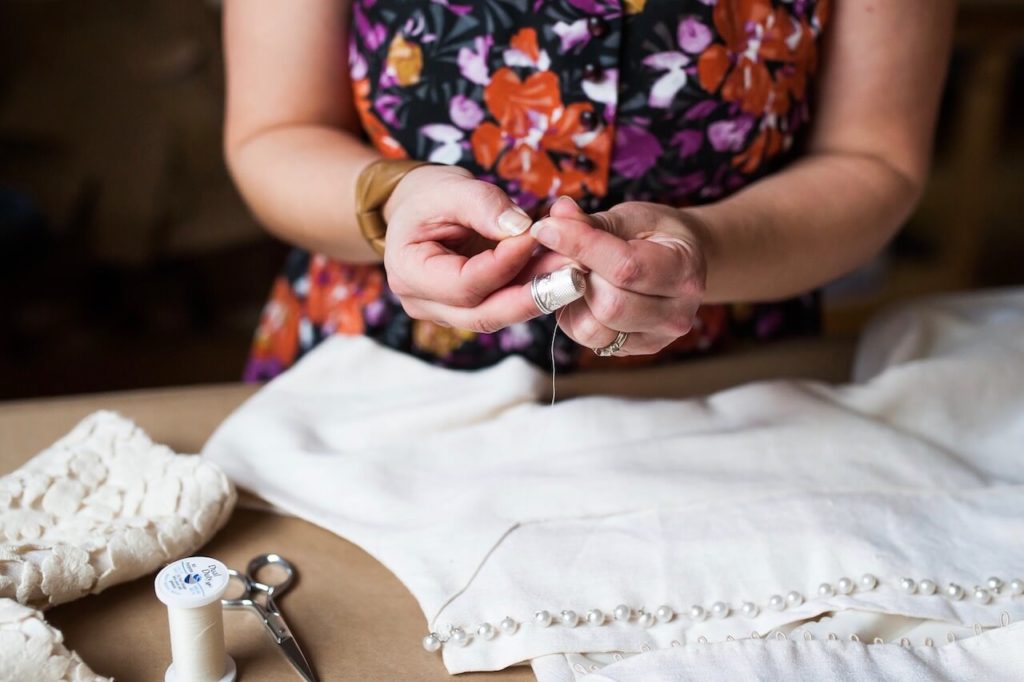
There are many great pleasures in my life and sewing practice that I originally resisted. I would never have learned to sew at all if it weren’t for a college professor who assigned me to work in the costume shop against my wishes. It wasn’t until someone said “You must do this” that I realized that I was totally in love in a way that would change my life forever. Thank you grouchy undergrad professor!
The same is true for using a thimble. Since I was first introduced to sewing while in professional settings making custom garments, I never considered it was even possible to resist hand sewing all together (something I’m learning that many hobby sewists do!), but I did resist using a thimble. To me, it seemed awkward and actually in the way of getting the work done.
Enter another grouchy professor, this time at the Master’s degree level, who would not allow me to do handwork without a thimble. Once I (quickly) got over the initial “this feels unnatural” phase, I was hooked! As my thimble now feels like an extension of my hand and is quite possibly my most treasured sewing tool, I owe her a huge thanks for making mandatory something I strongly resisted.
While it’s not in my nature to be crabby or to make people do something they really don’t wanna, I do strongly encourage my custom sewing students to embrace the joys and benefits of hand sewing and using a thimble. I would not have gotten very far in making professional-quality clothing without it!
In this post, I’m going to gently advise how to choose and use a thimble to improve the quality of your garments. Unless you are taking my Camp Workroom Social Hand Sewing Intensive, I won’t make you (even though it could change your life.)
Why use a thimble?
So you probably know what a thimble is (even if you’ve only seen one on Monopoly), but what is it for?
The thimble’s purpose is to allow you to use more of your hand while hand sewing, as opposed to simply pinching the tiny needle between two fingers. The thimble allows you the protection to fully employ a third finger for hand sewing, giving you exponentially greater control, precision, and speed.
Once you have greater control, precision, and speed you’ll stop dreading hand sewing and start discovering all the ways that it can truly improve the quality of your garments and maybe even fall in love with it!
How to choose a thimble
The key to learning to love using a thimble is finding one that fits and suits you. There are lots of different sizes and types!
Finding the perfect thimble for you will be a personal decision. What works for one might not work for another. For some, the search is brief but for others it may take some trial and error before finding a good match.
Finding your fit
Though there are specialty varieties, the majority of thimbles used for garment construction are worn on the middle finger of your dominant hand. While the type of thimble you prefer may evolve or change, the need for a good fit will remain consistant.
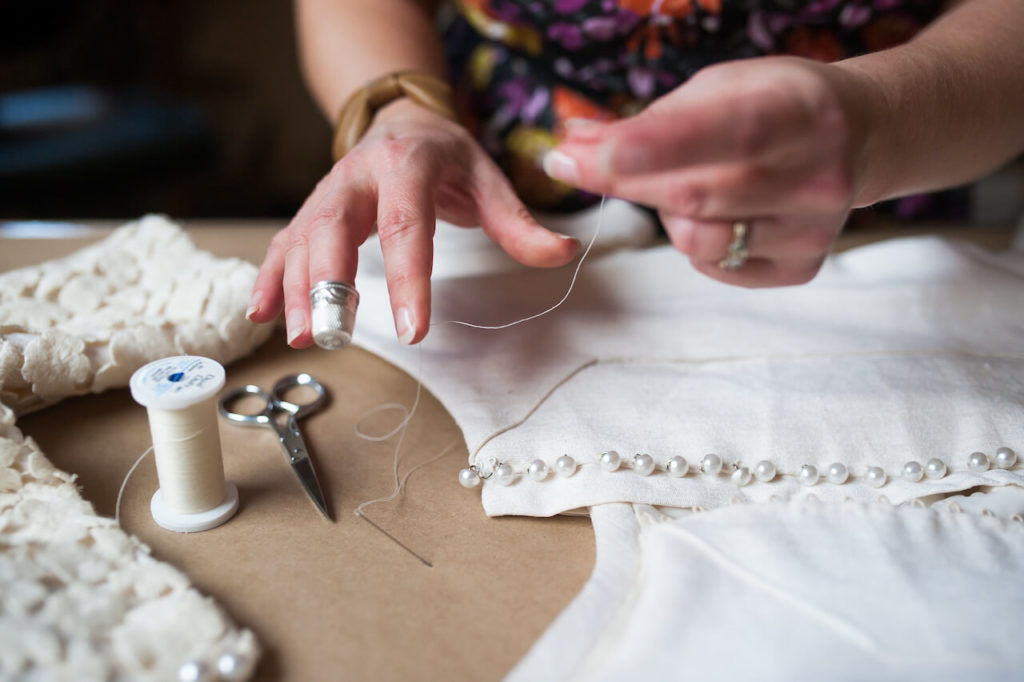
You’ll want to find a thimble that is not too tight and not too loose. To test for a good fit, try a thimble on the middle finger of your sewing hand. Hang your hand down at your side and move your fingers around. If it stays on and doesn’t feel too tight, you’ve found a good contender! Wear it around and go about doing other things for 15 minutes or so. Your thimble should stay on and feel comfortable enough that you don’t really notice it is there. I often forget I’m wearing mine!
Finding your style
When my grad school professor professed there would be no exceptions, I first tried some traditional metal thimbles. As a beginner, I couldn’t find one that fit or felt quite right to me.

Next, I tried a leather thimble. For me, this was the tool I needed to transition into being a thimble wearer! My first thimble was made of leather and had a panda bear on it. I used it so much that wore off most of his face, so I drew it back on several times! This thimble is almost completely made of soft leather, but it’s also got a little metal disc inside to protect the pad of your finger when sewing.
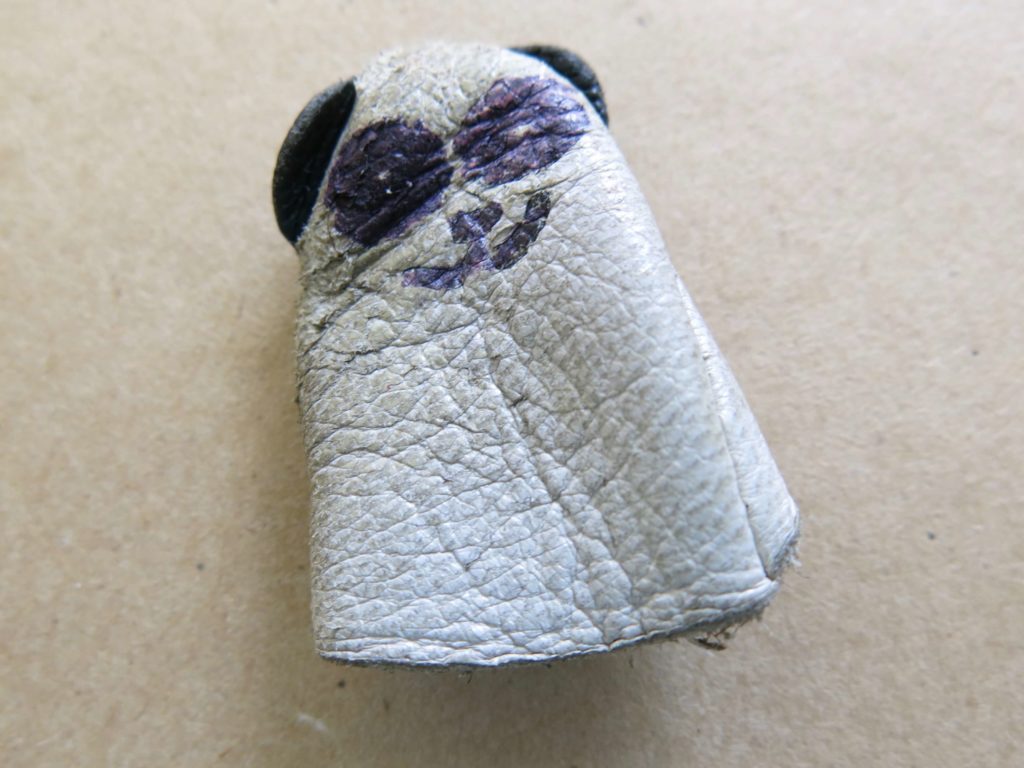
I eventually moved on to a Nimble Thimble. While still a leather thimble with a hidden metal disc, it was a little sturdier than my panda friend. Nimble Thimbles come in small, medium, and large sizes and are generally what I recommend as a ‘starter thimble’. Leather can feel much more natural than metal and will conform to your finger with use. There are lots of varieties of leather thimbles and you can even make your own for a custom fit!
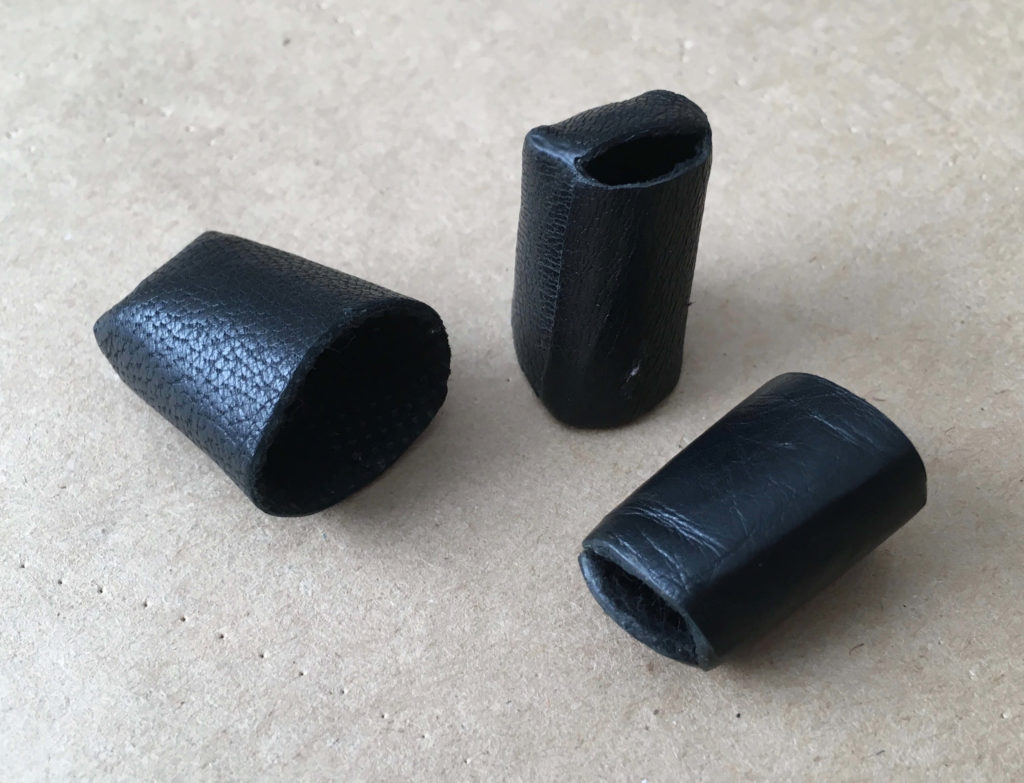
When I started working in New York City as a theatrical milliner for Lynne Mackey hand sewing lots of heavy materials every day, I upgraded to this metal thimble. I am in love with it. Not only do I find it beautiful, it fits perfectly, and makes hand sewing a chore that I love.
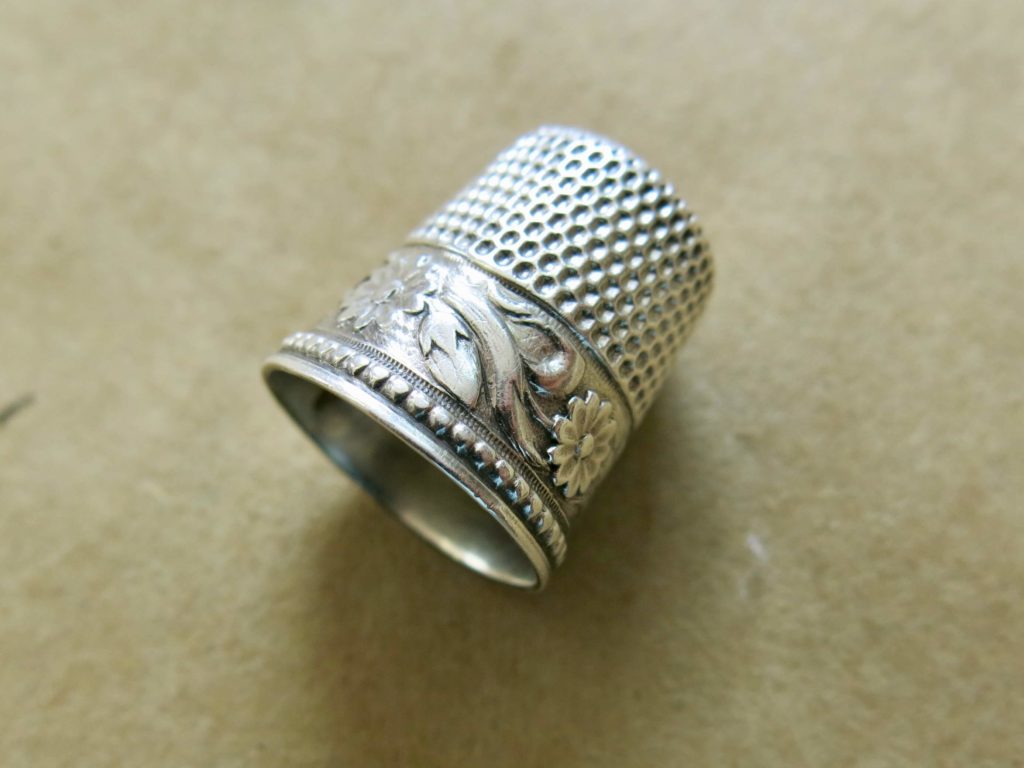
Metal thimbles also come in lots of varieties and sizes (including ones that have open tops). Since they are so sturdy, antique metal thimbles are often as good or better than brand new ones.
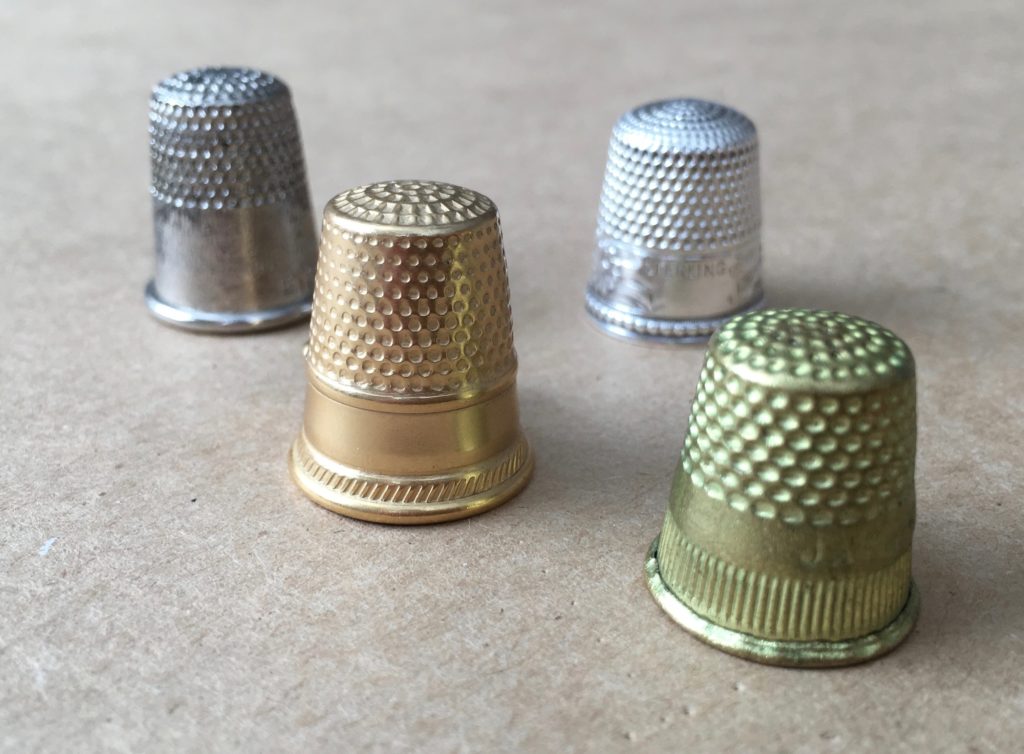
You might also want to try plastic thimbles. They are a little more rigid than a leather thimble but a little less rigid than a metal one.
The Dritz Soft Comfort Thimble (small, medium, and large shown here in green) have come recommended by some of my students. There are also hard and soft plastic versions of classic metal thimbles, if that sounds like it might be a good fit for you!
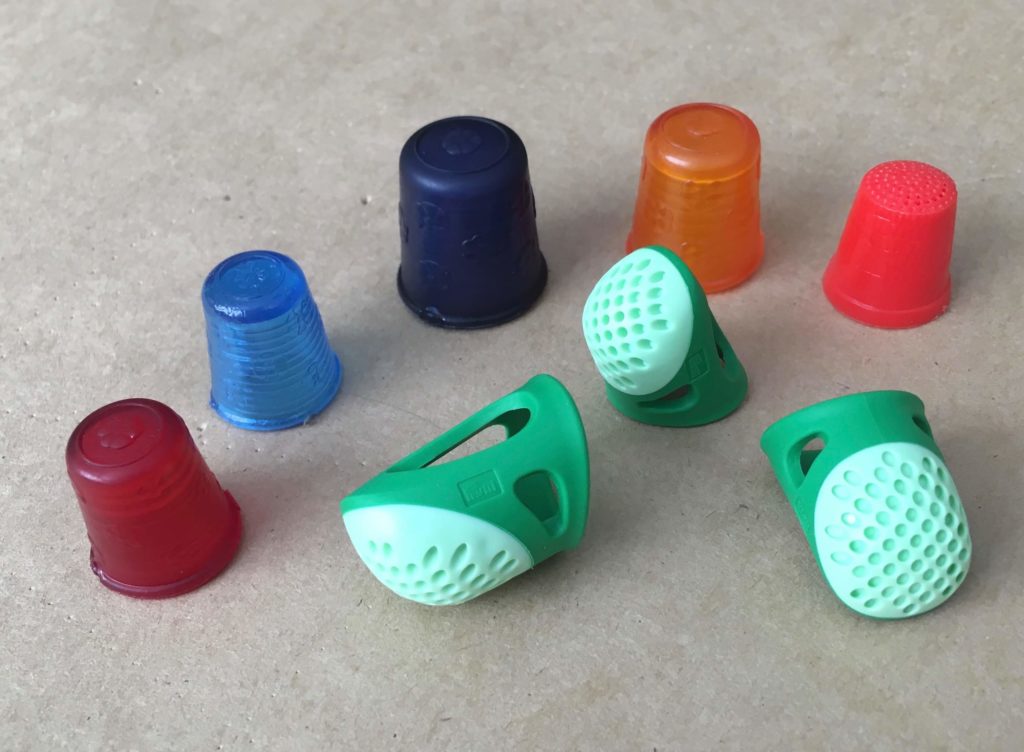
How to use a thimble
To begin hand sewing while using a thimble, you want to hold your needle between your thumb and index finger. You’ll push the eye end of the needle with the thimble on your middle finger.
The position of your fingers when you start hand sewing using a thimble is not unlike the position you’d put them in while holding a pencil (though the position of the needle and your wrist are different than when writing).
So here I am with my thimble and my pencil. I’m pinching the pencil between my thumb and index finger and curling my other fingers back.
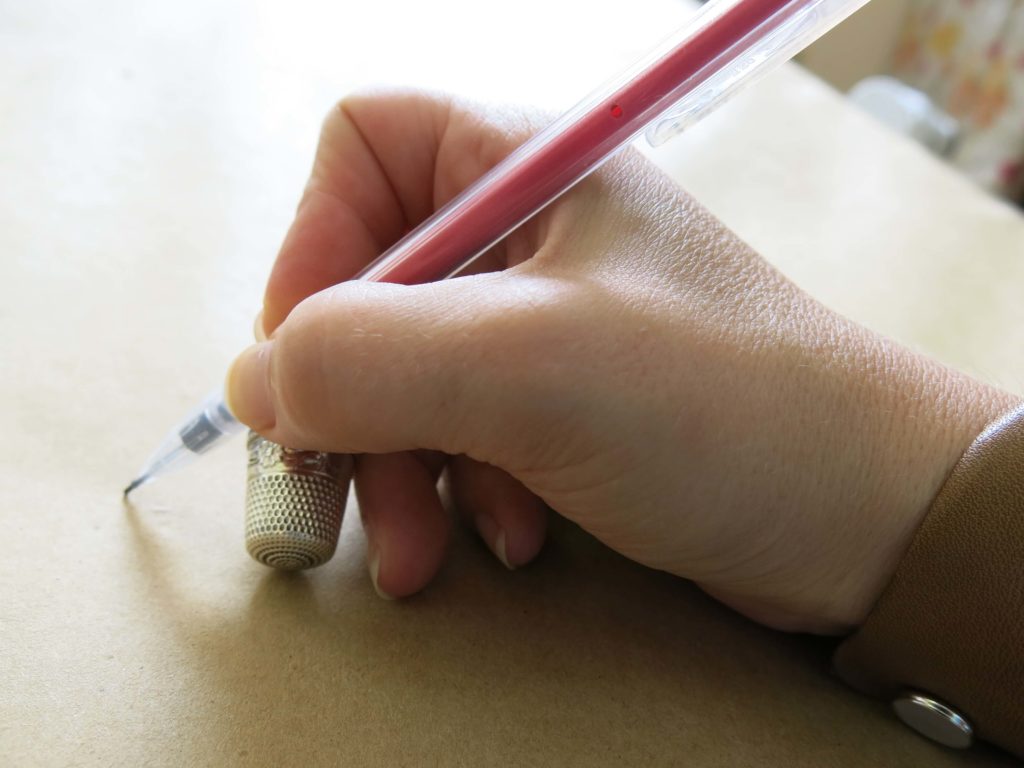
But to hand sew, I’ll keep the shapes of my fingers in basically the same position, but my wrist turns and my needle is held at a different angle.
Whereas I hold my pencil nearly parallel to my index finger (almost as an extension of my finger), I hold my hand sewing needle nearly perpendicular to my index finger. This puts the eye end of the needle against the thimble on my middle finger. In this position, I can employ my protected middle finger to help push and control my needle while stitching.

I will stitch in the direction my needle is pointing while keeping my fabric supported by a table and my other hand.
Hand stitching while your work stays as flat as possible on a table not only keeps it from getting over-handled, it encourages the stitcher to keep their hand and needle on the same side of the fabric. A beginner’s mistake is to want to poke in from the top and pull out through the bottom. This is not only unnecessarily time consuming, it rarely gives great results. Learning to complete a stitch while staying on the same side of the fabric will help you gain the speed, invisibility, precision, and control that lead to impeccable and efficient hand stitching.
Here’s a quick silent clip of me using a fell stitch to add unbound grosgrain (petersham) to a waistband in my eCourse Smarty Pants. Thimble powered hand sewing in action!
Practice makes the heart grow fonder
As with most skills, learning to sew with a thimble takes time and practice, but I truly believe it is worth the effort. I’ll have to save “The Benefits of Hand Sewing in Garment Construction” for another blog post since this may be my longest post to date and I could honestly I could talk about hand sewing all day! (If you’d like to learn about hand sewing for a whole weekend with me during a sleepaway sewing camp for adults, check out the Couture Hand Sewing Intensive I’ll be teaching again at Camp Workroom Social!)
I hope this posts sheds a little light on the humble thimble and encourages you to become your own crabby professor. Find a good fit and force yourself to stick it out through the awkward phase. Through practice, the thimble just might become your most treasured tool too!
NEXT POST: ??? While waiting for my current bride to get married (I don’t start blogging behind-the-seams until after the wedding to keep the dress a secret), I’ll be posting on various topics. If there’s something you’d like me to write about, comment below or contact me! I’d love to hear from you.
This post was rewritten for an article in Threads #208, April/May 2020.
Here’s the direct link, if you are a “Threads Insider”.




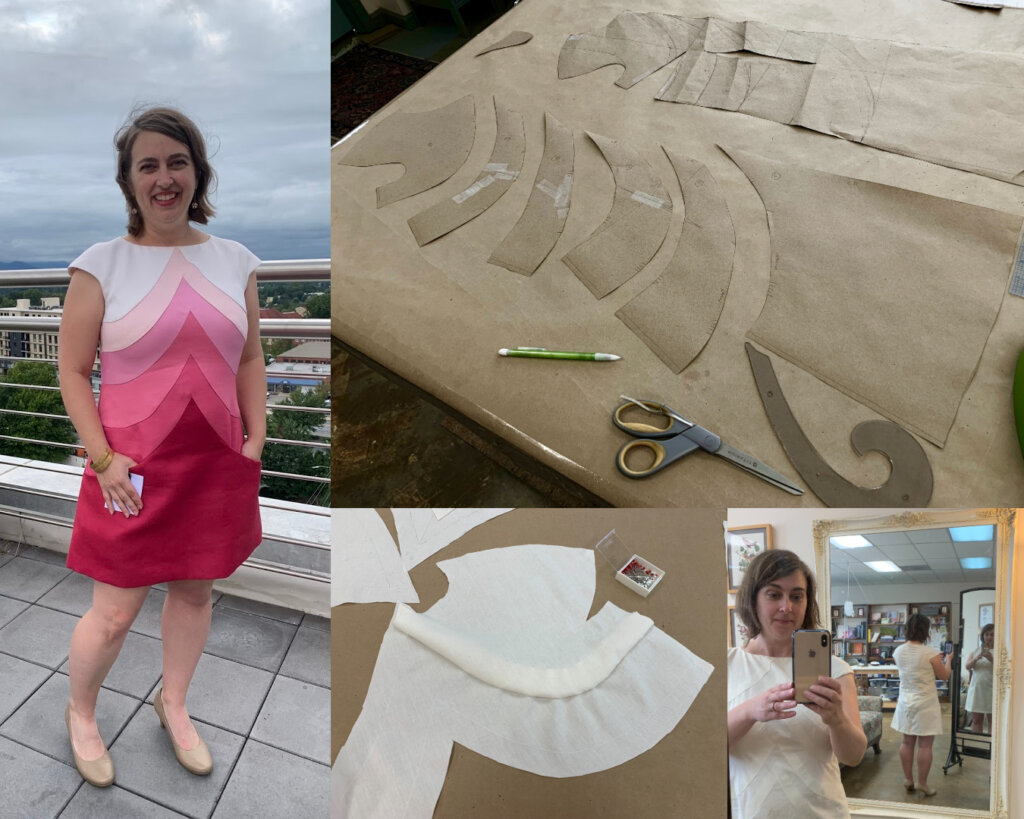
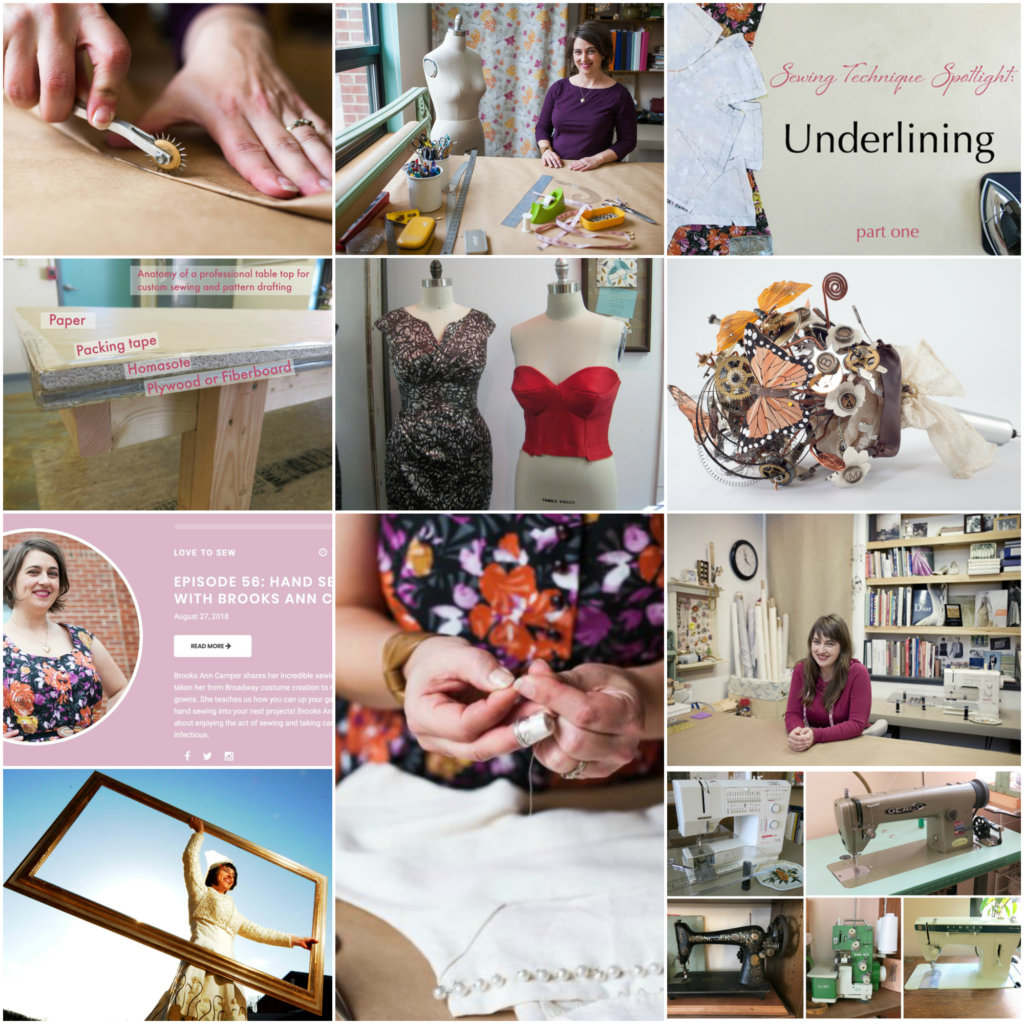

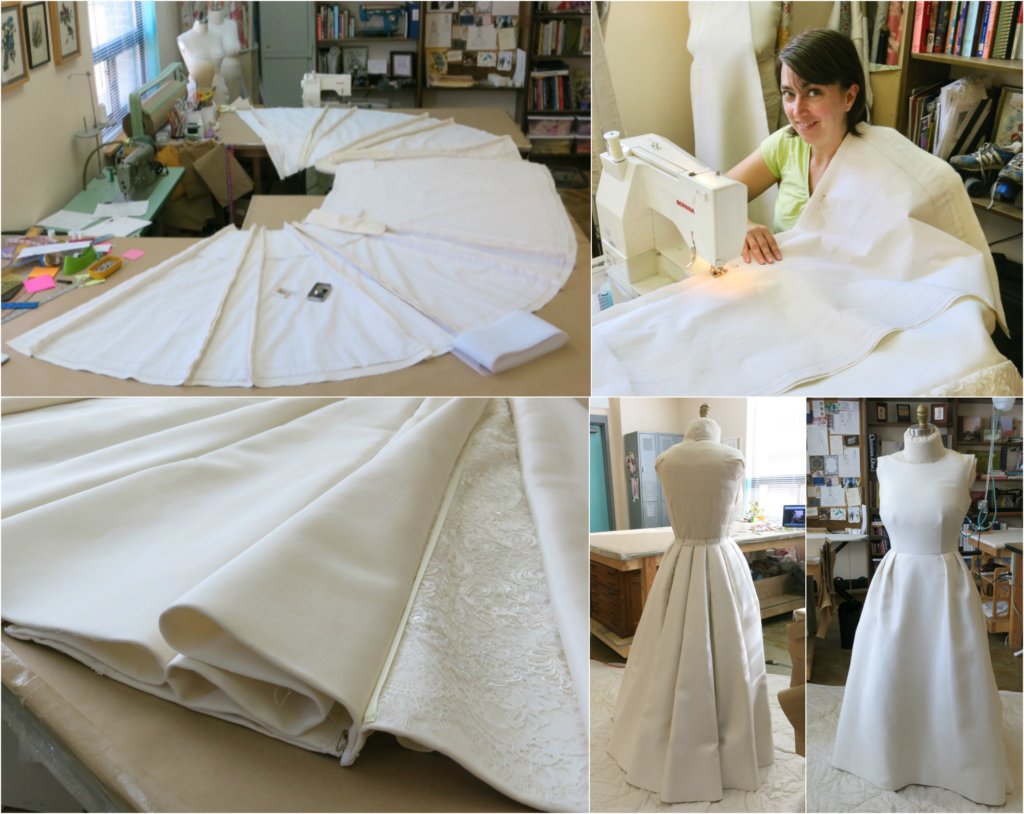



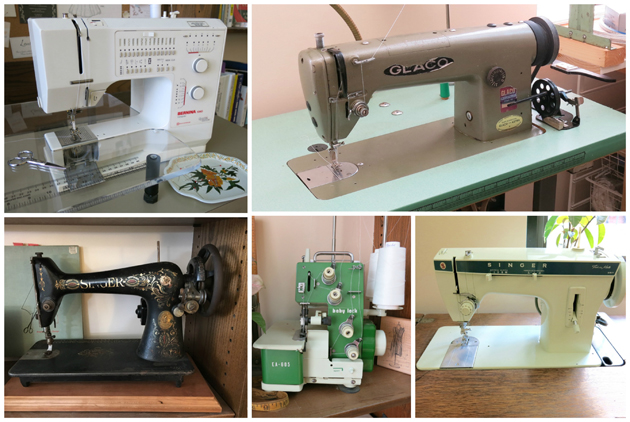






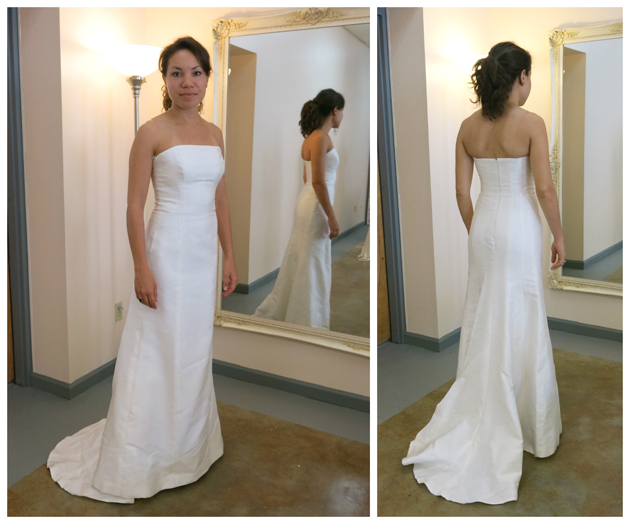


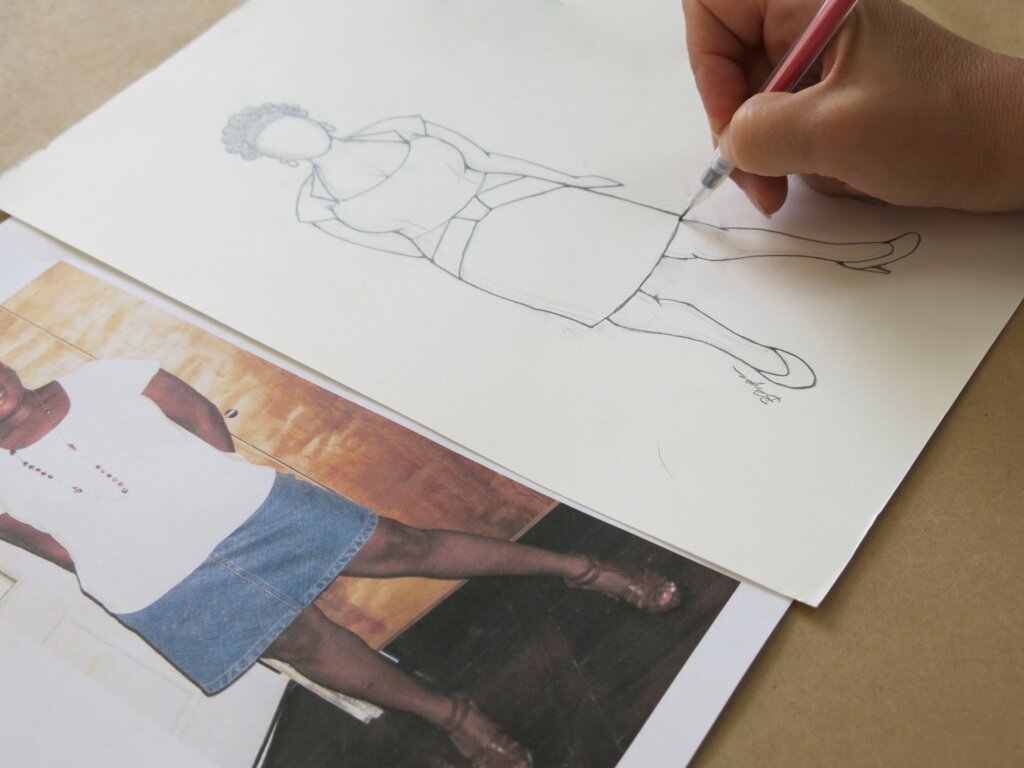
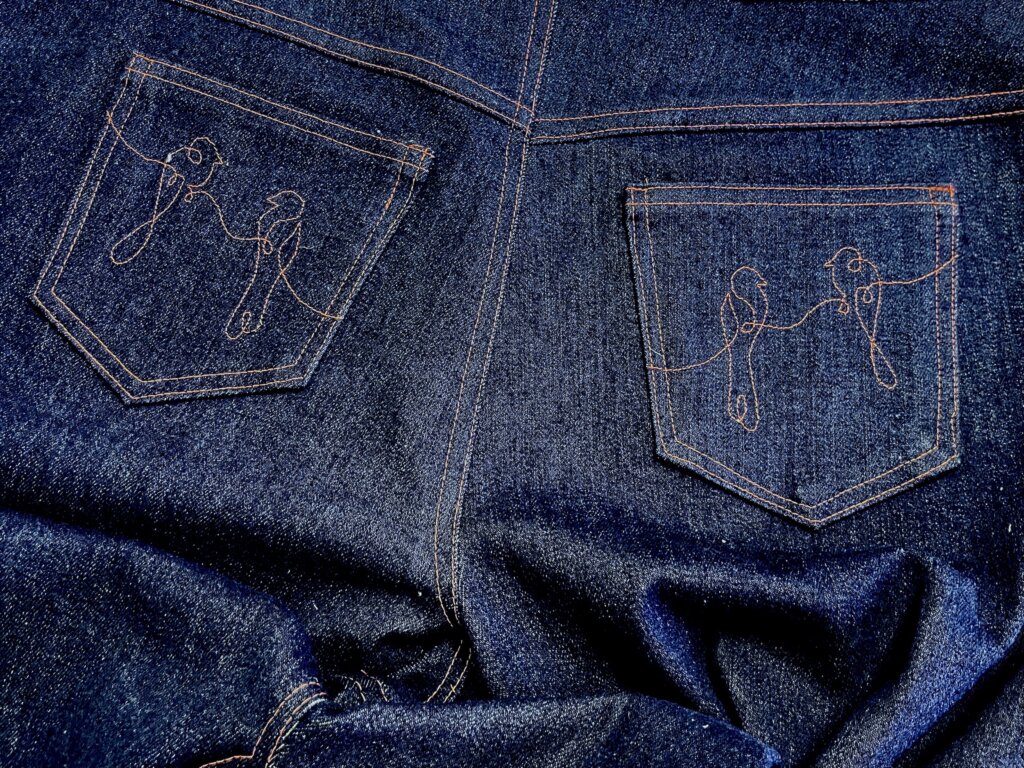
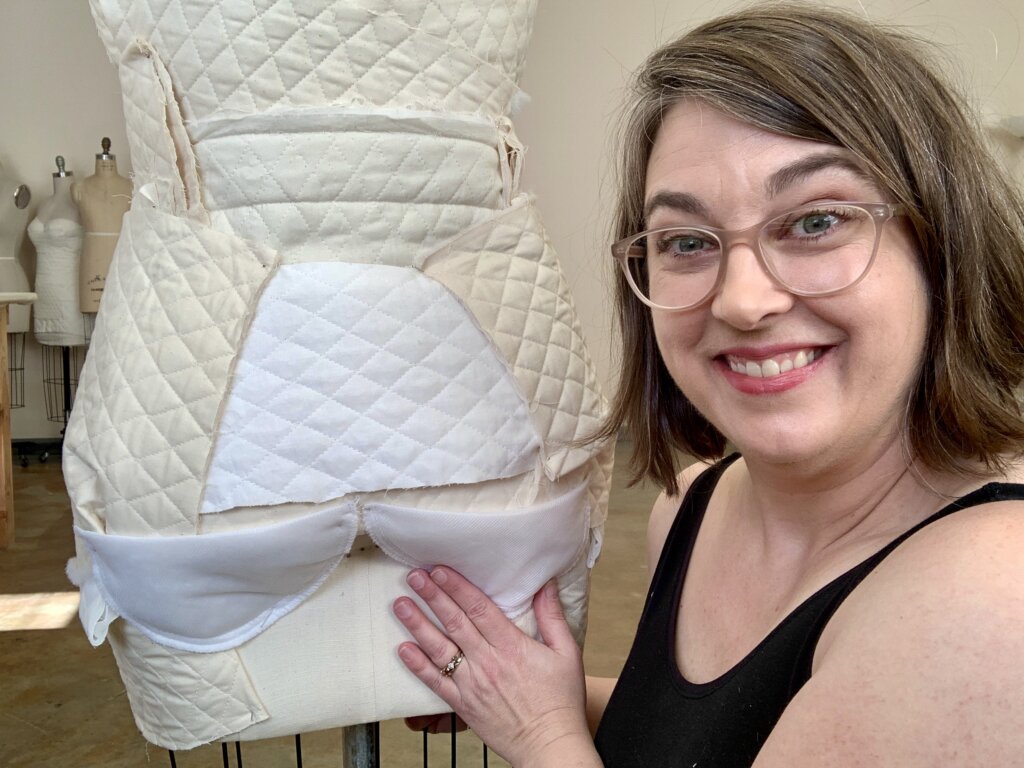

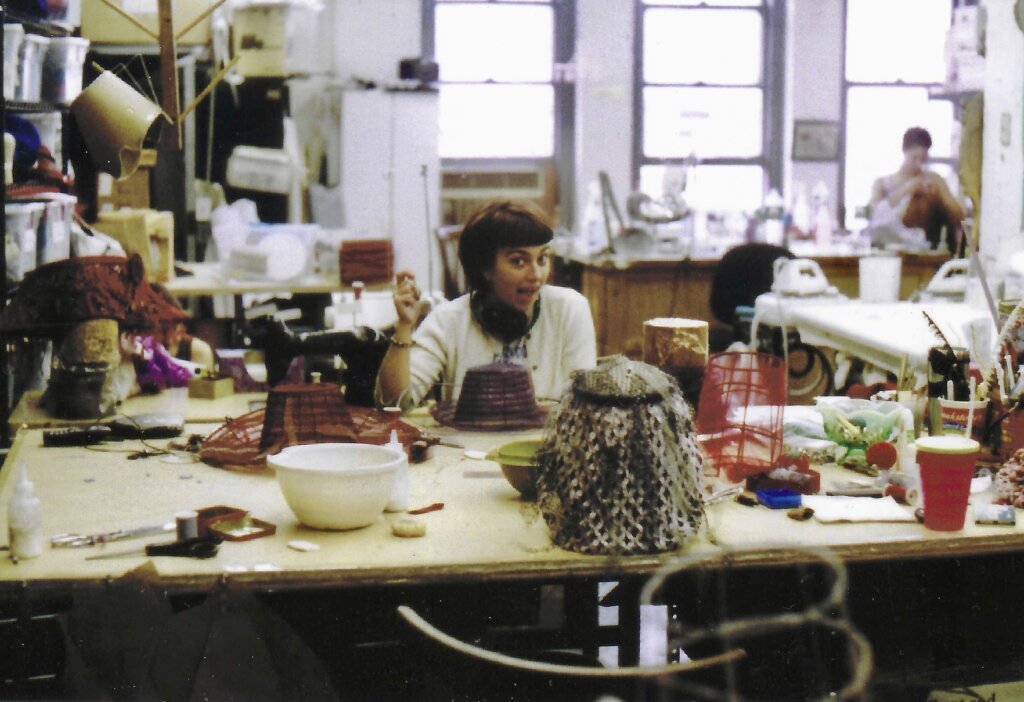

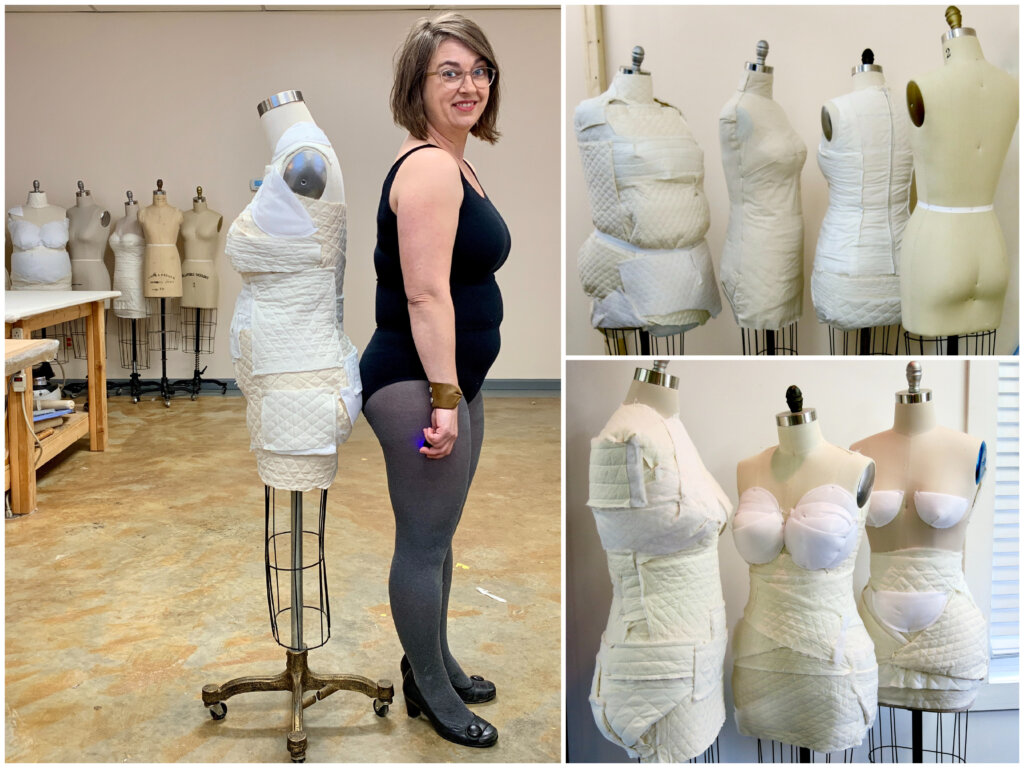

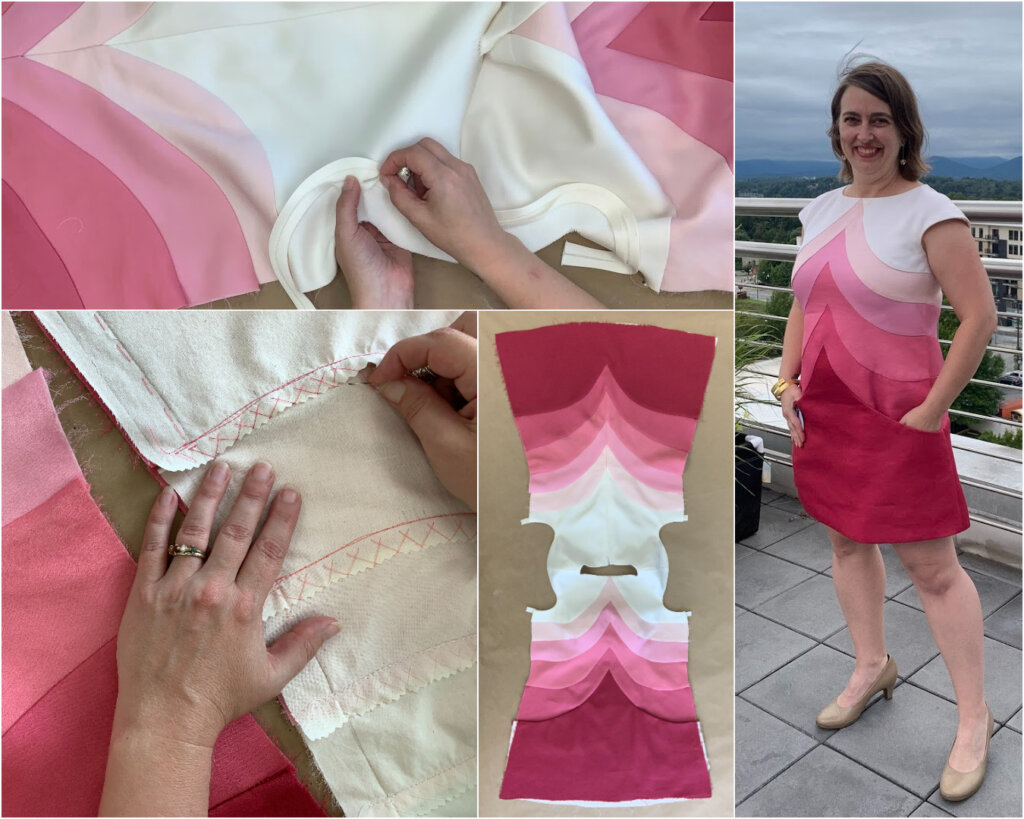
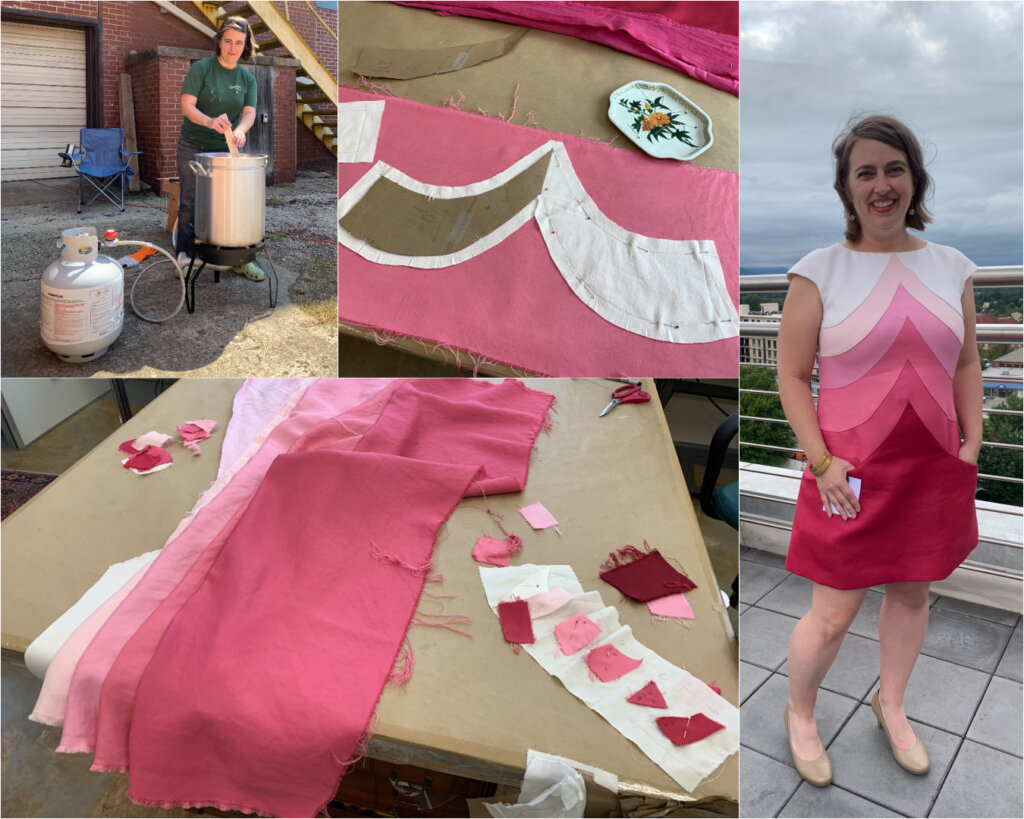

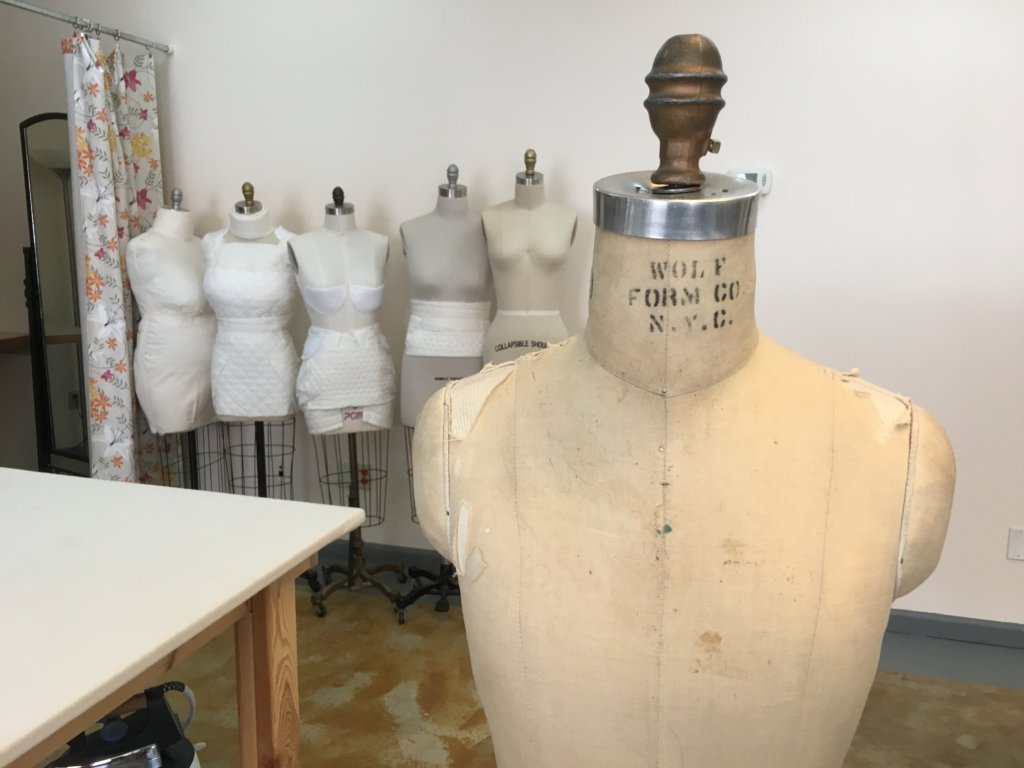
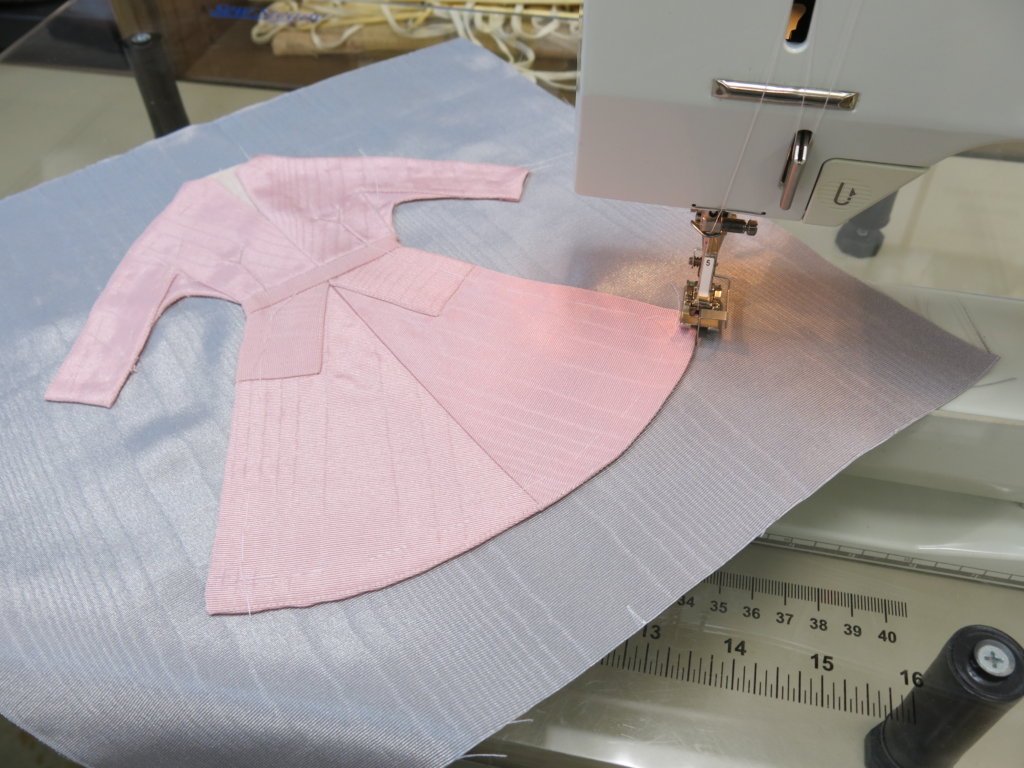





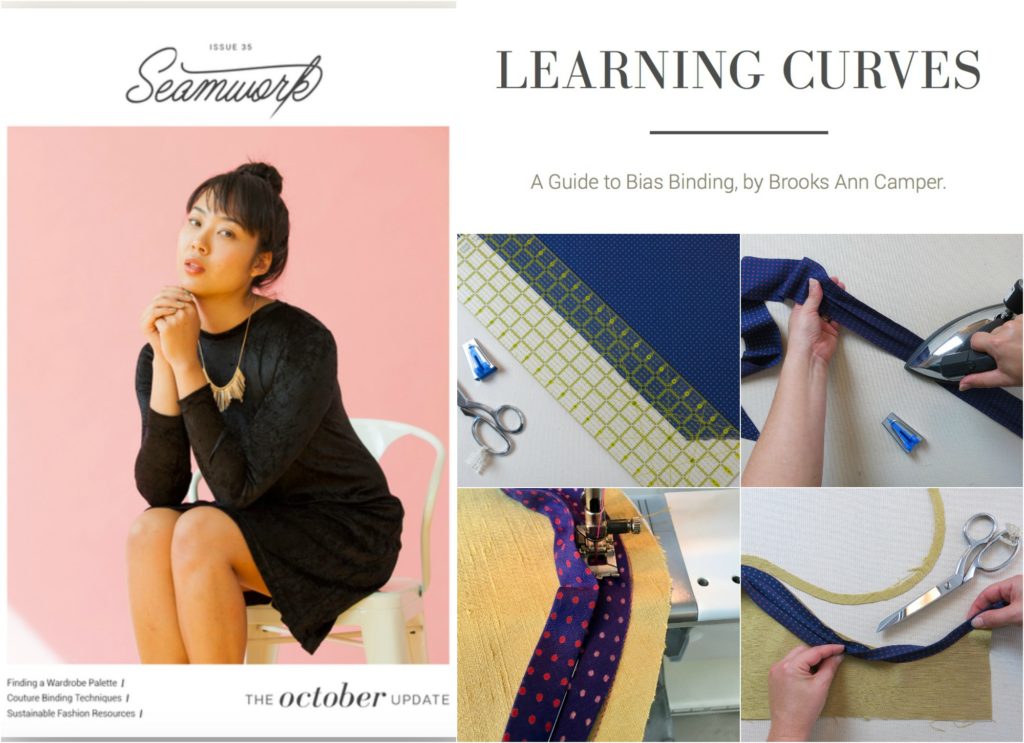
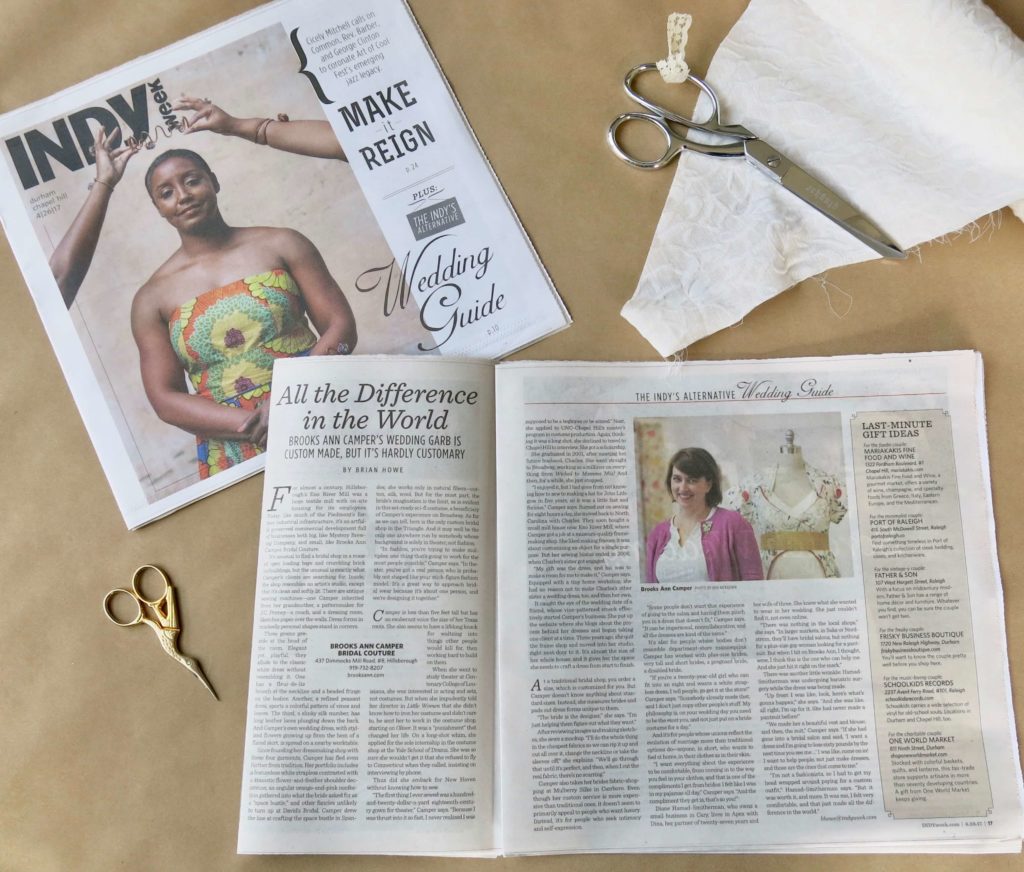









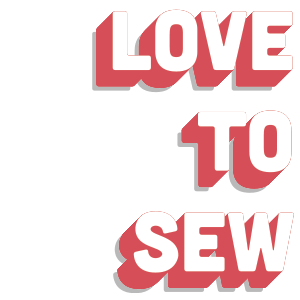







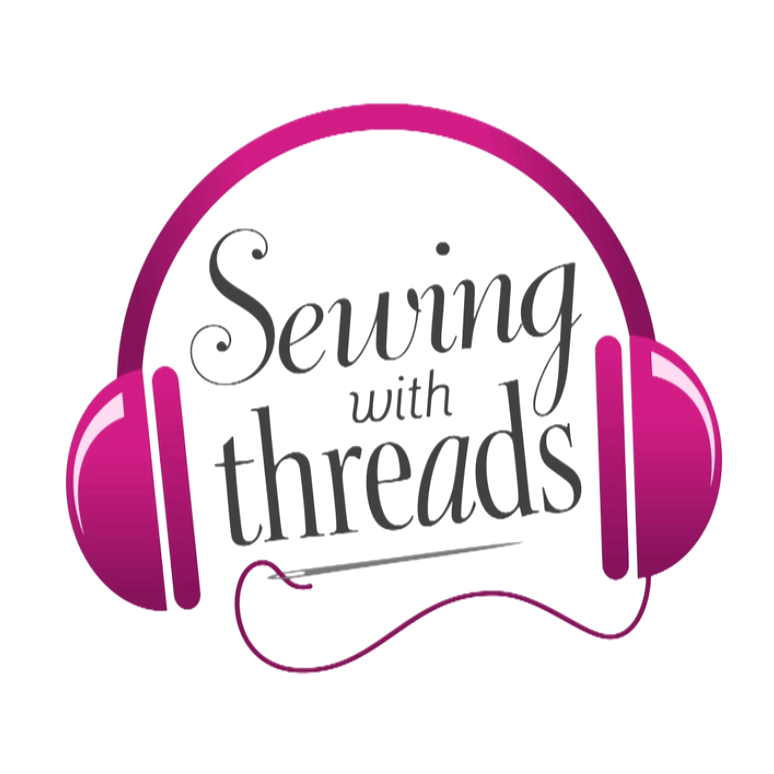
20 Responses
Thank you, Brooks Ann, for giving me a wake-up call – this post felt like it was written specially for me! I find myself hand-sewing frequently as I work with bridal alterations – how else could I redo the understitching on a strapless gown after taking in the side seams? That boned bodice isn’t going under the machine needle! My fragile fingertips get pierced by my needle multiple times in just a few inches of trying to force the stitch through all those layers. Your post has hit me with an Aha! moment – it’s time for me to pick up one of those thimbles I have lying around the studio, wear it until it feels like it belongs on my hand, and learn to use it! I’m using YOU as my own grouchy professor, I hope you don’t mind!
Fantastic! So great to hear Janee! It is truly my pleasure to be your grouchy professor.
HI Brooks Ann! Thank you for the great post. I absoluteley see the benefits of using thimbles, but I think I haven’t found yet one that feels comfortable to me. Your panda-leatherd one looks adorable :-D and I think that could be something to try. Maybe the sturdy metallic ones are just a bit too sturdy for me. Definteviley needs to test it. Again thank you for the great inspiration.7
My pleasure! I used leather thimbles for years before finding a metal one I liked. I hope you give it a try. Leather thimbles are great!
Thanks for this great eye-opening article. I am getting calluses on my middle finger from sewing “unprotected” because I don’t have yet found a thimble I like. Where did you get that beautiful (silver?) thimble you are using? I find only the ugly china made ones here.
Where I worked as a Broadway milliner, there was a tin full of thimbles for anyone to use. I found my sterling silver thimble in there and have been in love with it ever since. It took years of sewing with a leather thimble before I found the perfect metal one for me. Good luck on your journey to finding a thimble you love to wear!
I’m so glad I read this post today. Though I’ve sewn for more years than I care to think about, I have never gotten the hang of using a thimble! You have encouraged my search for the perfect one. I recently made a hand worked buttonhole in heavy denim (after a couple of practice ones too!) and my fingers were ridiculously sore afterward. Also I just signed up for a class on hand quilting so a thimble is definitely in order. I have a jar of older thimbles that belonged to my Mom so I hope at least one will be THE one! Thank you for a lovely & timely post!
My pleasure and good luck!
Brooks Ann, Thanks so much for this article. I get chided for hand sewing but it is an indispensable part of my garment making.
Don’t you feel lucky that you know something they don’t know? Whoever is chiding you is missing out! Thanks for your comment and keep on using your hands…
Brooks Ann:
You mentioned that you would be doing an article on hand sewing. Have you considered doing a Craftsy class on hand sewing for garments? They have ones on hand sewing for quilting and applique bit no hand sewing classes for garments. Alison Smith and Susan Khaljie touch on hand sewing. However, no one really covers how to keep your stitches uniform or what stitch length (sti) to use.
Craftsy isn’t really my thing, but I do run my own self-produced indie online classes. Check out my classes page! The handsewing-specific class that I teach is currently only an in person intensive at Camp Workroom Social. I do however have plans to turn it into an online course someday! Your kind comments might make this happen sooner than later… Thanks!
I use my middle finger to. Help hold the needle. I was only able to adjust to a thimble by putting it on my ring finger. I make handmade drapes do my fabric is ultra thick.
If it works, it works!
I really do hope you write that “The Benefits of Hand Sewing in Garment Construction” post someday!
Thanks for the reminder! I plan to turn my Camp Workroom Social Hand Sewing Intensive into a video class as soon as I can.
Hello! I read this post some months ago and it made me understand how I was supposed to use the thimble – I had previously pushed the needle in a different angle an the thimble was just in the way. Now I use it all the time and it really helps, both against finger ache of holding the needle to tightly and against pricking holes in my finger!
So happy to hear!
Thanks so much for explaining that the thimble is meant to let you use your third finger because I thought it was simply to protect your fingers! My mother-in-law keeps telling me I ought to get one because I sew a lot. I’ll have to ask her what kind I should get.
Glad this post helped you! I wrote a new version that will be published in the April/May 2020 issue of Threads Magazine.